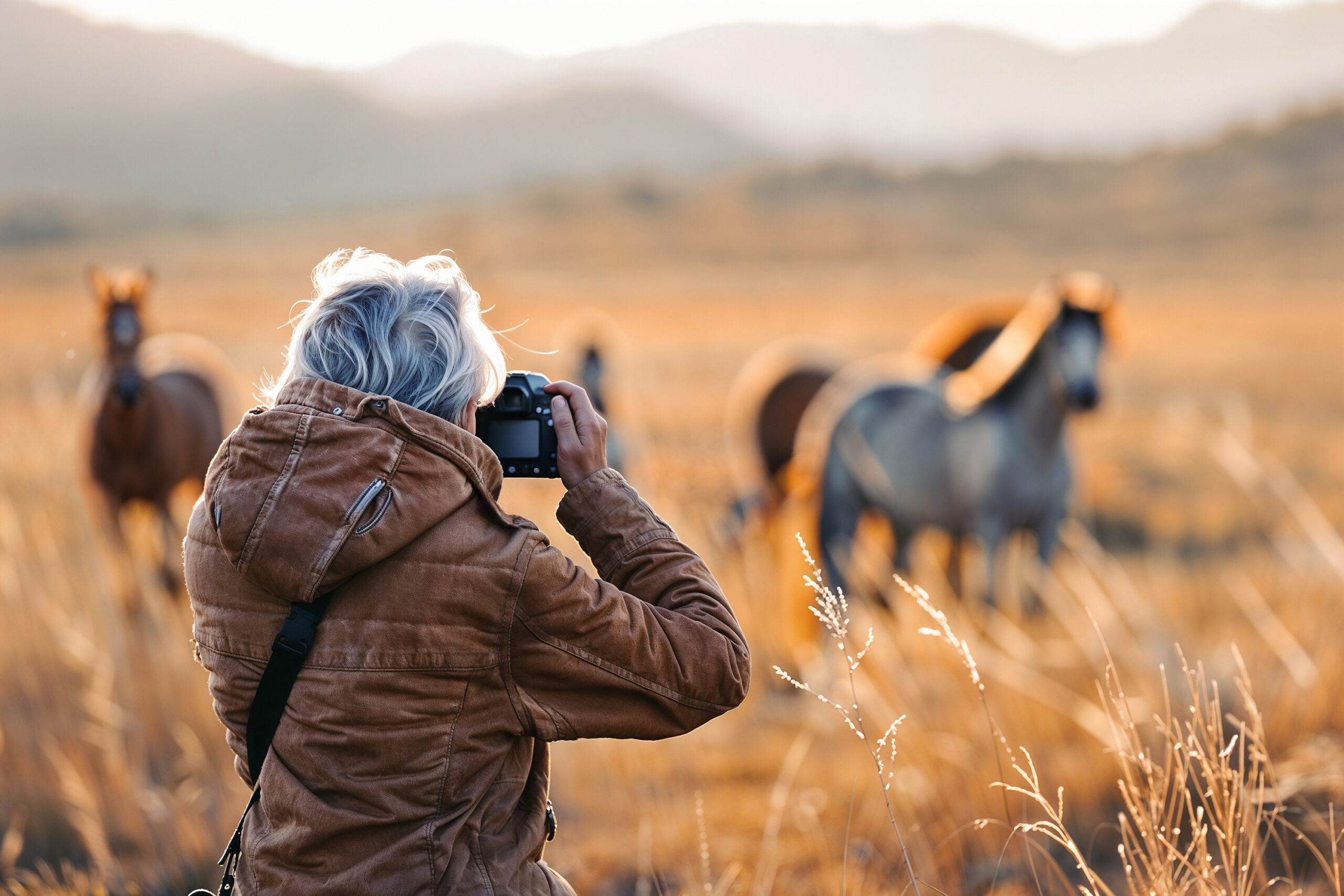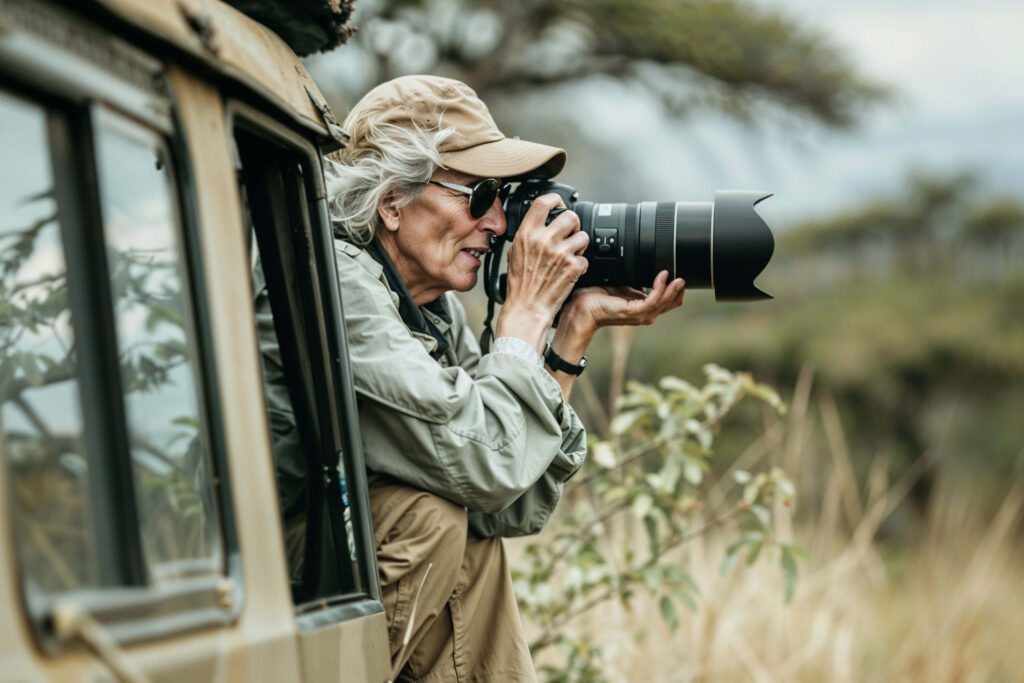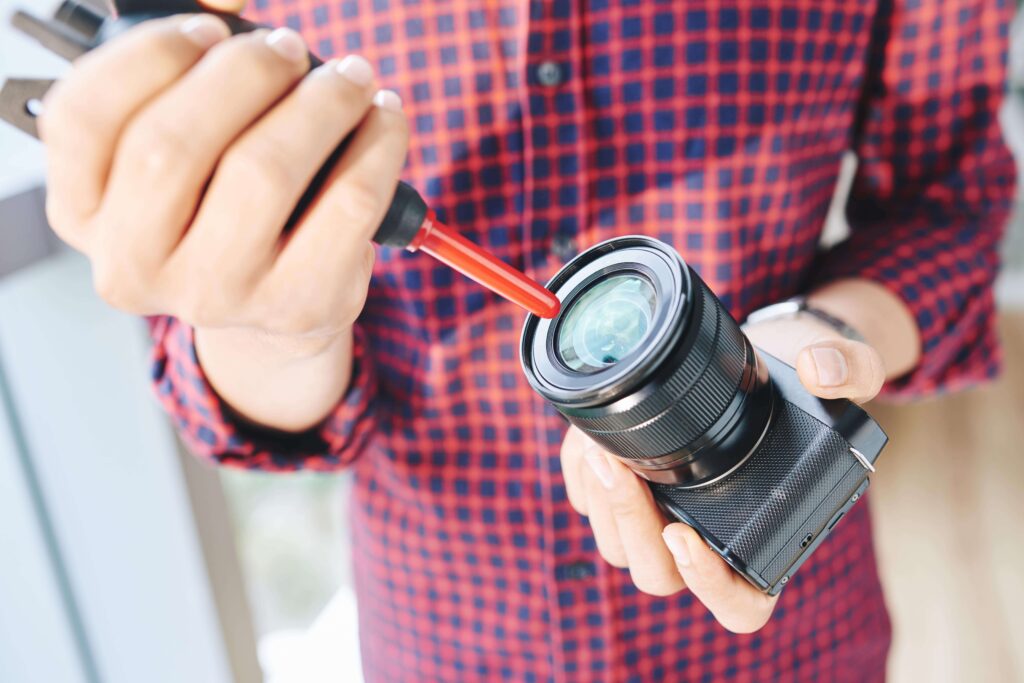
A wildlife photographer captures the beauty and drama of animals in their natural habitats. Imagine standing in the heart of a vast jungle, waiting for hours to capture a rare tiger mid-leap or a bird soaring through the sky. Wildlife photographers need patience, quick reflexes, and a deep love for nature. They travel to remote places, often working in challenging conditions, to document the breathtaking moments we rarely see. If you have a passion for animals and photography, learning how to become a wildlife photographer could be your first step into this exciting world.
Table of Contents
What are the Types of Wildlife Photography?
Wildlife photography is an exciting and dynamic field. Capturing animals in their natural habitat requires patience, skill, and a deep love for nature. If you’re wondering how to become a wildlife photographer, understanding the different types of wildlife photography is a great start. This knowledge will help you choose the right path and develop the necessary skills.
Bird Photography
Bird photography is one of the most popular types of wildlife photography. Photographers focus on capturing the beauty and grace of birds in flight, perched, or interacting with their surroundings. Since birds are fast and often elusive, patience and the right camera equipment are essential. A long lens is typically required to get detailed shots without disturbing the birds.
Mammal Photography
Mammal photography involves capturing larger animals like lions, elephants, and deer in the wild. These animals are often more challenging to photograph due to their size and behaviour. Safety is a top priority when photographing large mammals, as you don’t want to invade their space. As you learn how to become a wildlife photographer, you’ll understand the importance of respecting the animals’ territory.
Macro Wildlife Photography
Macro wildlife photography focuses on the tiny details of smaller creatures, such as insects, spiders, and amphibians. The aim is to reveal the intricate details of these small animals that are often overlooked. This type of photography requires specialised equipment like macro lenses to capture fine details up close. Lighting is also crucial, as small subjects often need controlled light to enhance their features.
Aquatic Wildlife Photography
Aquatic wildlife photography covers animals living in water, such as fish, dolphins, and whales. It’s a challenging field because it often involves underwater photography. Scuba diving skills are essential for marine photographers. Clearwater and natural light play a huge role in getting the best shots. Those interested in how to become a wildlife photographer should explore aquatic wildlife photography for its unique challenges and rewards.
Safari Photography
Safari photography is primarily focused on capturing the famous “Big Five” – lions, elephants, leopards, rhinos, and buffaloes. These animals are mostly found in Africa, and safari tours offer photographers a unique opportunity to observe and capture them in their natural environment. Photographers must often work from a vehicle, using long lenses to keep a safe distance while still capturing close, detailed images.
Nocturnal Wildlife Photography
Nocturnal wildlife photography is an exciting type of wildlife photography that takes place after dark. Many animals are most active at night, and capturing them requires a good understanding of lighting and night photography techniques. Photographers use specialised equipment, such as infrared cameras, to capture animals in their natural nocturnal environment without disturbing them.
Aerial Wildlife Photography
Aerial wildlife photography uses drones or other aerial equipment to capture images of wildlife from above. This type of photography offers a unique perspective, showing how animals interact with their environment on a larger scale. Drones must be used carefully to avoid scaring the animals, and it’s essential to follow wildlife photography ethics.
Conservation Photography
Conservation photography plays an essential role in wildlife preservation. Photographers use their images to raise awareness about endangered species, habitat loss, and conservation efforts. These powerful photos are used in campaigns, exhibitions, and publications to inspire action and promote conservation.
Understanding the various types of wildlife photography is essential if you’re learning how to become a wildlife photographer. Each style comes with its unique challenges and rewards. Whether you’re focusing on birds, mammals, or underwater life, mastering these techniques will help you capture stunning images. With dedication and practice, you can turn your passion for wildlife into a rewarding career.

Which Skills Are Required to Become a Wildlife Photographer?
Becoming a wildlife photographer is an exciting journey that combines a passion for nature with photography skills. While it can be challenging, the rewards are great if you love exploring the wilderness and capturing unique moments. Understanding how to become a wildlife photographer requires a mix of technical skills, creativity, and perseverance. To get started, certain skills are essential.
Understanding Camera Settings
A wildlife photographer must master the camera. Understanding how to adjust shutter speed, ISO, and aperture is crucial. These settings allow you to capture fast-moving animals in various light conditions. As wildlife moments happen quickly, you need to be prepared to adjust your settings without hesitation.
Knowledge of Wildlife Behavior
Learning about animal behaviour is key to capturing great shots. By studying how animals move, hunt, and interact, you can anticipate the best moments to take photos. Knowing when an animal is likely to appear or how it reacts to human presence helps you get the perfect shot without disturbing its environment.
Patience and Perseverance
Wildlife photography often involves long hours of waiting. Patience is necessary as animals don’t always appear on command. You might spend hours, or even days, in the wild to capture one perfect moment. Those who persevere despite challenging weather or difficult terrain are the ones who succeed.
Adaptability to Environments
Wildlife photographers must be able to adapt to different climates and locations. Whether it’s a cold mountain or a humid rainforest, you need to be ready for any environment. This includes wearing appropriate gear and knowing how to protect your equipment from harsh conditions.
Strong Observation Skills
Being observant helps you spot animals even when they are well camouflaged. Keen observation skills allow you to notice subtle movements or sounds that might indicate an animal’s presence. The ability to quickly identify these clues can lead to successful photography opportunities.
Compositional Knowledge
Creating visually stunning photographs is not just about pointing the camera at the subject. You need to understand composition techniques, like the rule of thirds, leading lines, and framing. These principles help in making your wildlife photos more appealing and professional-looking.
Physical Fitness
Wildlife photography often involves travelling to remote locations and carrying heavy equipment. Physical fitness becomes an essential skill to endure long hikes, climb rugged terrains, or even camp out in the wilderness for days. Staying fit enables you to access areas that most people can’t reach.
Post-Processing Skills
After taking the perfect shot, post-processing is the next important step. Software like Adobe Lightroom or Photoshop allows you to enhance your photos by adjusting light, colour, and sharpness. While the goal is to keep the image as natural as possible, these tools can help in fine-tuning your work.
Storytelling Ability
Great wildlife photography tells a story. It’s not just about snapping a picture but also capturing an animal in a way that conveys emotion or action. A skilled wildlife photographer knows how to create narratives through their images, engaging viewers and giving meaning to their shots.
Networking and Marketing Skills
In today’s digital world, you also need networking and marketing skills. Knowing how to connect with other photographers, publications, or even brands can help you grow your career. Having a solid social media presence or a website to showcase your work is also important.
Wildlife photography is about more than just taking pictures; it’s about capturing the beauty of nature while understanding the technical and creative sides of photography. By honing these skills, you’ll be well-prepared to embark on a journey filled with unforgettable moments in the wild. Learn more about how to become a wildlife photographer by joining Studyhub courses.

How To Become a Wildlife Photographer in the UK
Becoming a wildlife photographer in the UK is an exciting journey. It offers a unique blend of adventure, nature, and creativity. But it also requires dedication, patience, and some essential skills. Below, we will guide you through the steps to follow if you want to know how to become a wildlife photographer turn your passion for wildlife photography into a rewarding career.
Understand Wildlife Photography
The first step in becoming a wildlife photographer is to truly understand what it involves. Wildlife photography is not just about taking pictures of animals. You must capture their behaviour, their natural surroundings, and the emotions of the scene. Spend time studying wildlife photography online or through books to understand its artistic and technical aspects. You can also join Studyhub courses like – Photography : Digital Photography, Wildlife Rescue and Rehabilitation, Wildlife Rehabilitation: Caring for Our Natural Treasures, Advanced Photography Course.
Get the Right Equipment
Investing in quality camera equipment is crucial. Wildlife photography requires a DSLR or mirrorless camera with good zoom lenses. Telephoto lenses are essential as you will often shoot animals from a distance. Also, a sturdy tripod helps stabilise shots in different terrains. Start with equipment within your budget, and upgrade as your skills grow.
Learn Photography Skills
Knowing how to operate your camera is key. Learn photography basics such as exposure, composition, lighting, and shutter speed. Mastering these skills will allow you to adapt quickly in the field, where conditions can change rapidly. Take photography classes or watch tutorials to enhance your knowledge.
Study Wildlife Behavior
To capture great wildlife photos, you must understand your subjects. Learn about the habits, movements, and environments of different animals. This will help you predict their actions and place yourself in the right spot for the perfect shot. Observation is crucial when it comes to getting close to wildlife without disturbing them.
Practice Patience and Timing
Wildlife photography requires immense patience. Animals rarely pose for pictures. You might need to wait hours to capture the right moment. Practice patience and be prepared to act quickly when that moment arrives. This is one of the key challenges in becoming a wildlife photographer.
Build a Portfolio
Your portfolio is your gateway to professional opportunities. Start by showcasing your best work on a personal website or social media. Make sure your portfolio displays your ability to photograph different species and environments. A diverse portfolio attracts potential clients and collaborators.
Network with Other Photographers
Networking with other wildlife photographers can be valuable. Attend photography workshops, seminars, and online forums. Join photography groups to gain insights, tips, and opportunities for collaboration. The wildlife photography community in the UK is strong, and building connections can open doors to new possibilities.
Gain Field Experience
Experience is vital. Visit national parks, nature reserves, and wildlife sanctuaries to practice. Spending time in the wild will improve your skills, especially in observing and approaching animals. Field experience also helps you develop an eye for natural compositions.
Understand the Legal Aspects
In the UK, there are legal regulations concerning wildlife photography. Always seek permission before photographing in protected areas. Ensure that your actions do not disturb the wildlife or their habitats. Understanding wildlife laws helps you act responsibly and ethically as a wildlife photographer.
Consider Formal Education
While formal education is not mandatory, it can enhance your knowledge. Courses in photography, environmental science, or wildlife conservation can deepen your understanding of the craft. Universities in the UK offer specialised programs that can add to your credentials and skill set. Learn more about wildlife photography with Studyhub courses like – Photography : Digital Photography, Wildlife Rescue and Rehabilitation, Wildlife Rehabilitation: Caring for Our Natural Treasures, Advanced Photography Course.
Sell Your Work
Once you’ve built a strong portfolio, start selling your work. You can sell prints, license your photos for magazines or websites, or work on commissions. Online platforms also allow you to showcase and sell your photos. Learning how to market your work is essential to succeeding financially.
Stay Dedicated
Success in wildlife photography doesn’t come overnight. It requires dedication, persistence, and passion. Stay committed, continuously refine your skills, and always seek new opportunities to grow. This career is about blending your love for photography and wildlife, so enjoy the process.
In conclusion, if you are passionate about capturing the beauty of nature and willing to dedicate time to learning, then wildlife photography might be your calling. By following these steps, you’ll learn how to become a wildlife photographer and set yourself up for success in the UK. The journey might be challenging, but the rewards of working with nature make it all worthwhile.

Tips for earning money as a wildlife photographer
Earning money as a wildlife photographer can be challenging but rewarding. Wildlife photography is about patience, passion, and a deep love for nature. However, turning this passion into a source of income requires more than just good photos. Below are some tips to help you succeed financially as a wildlife photographer.
Build a Strong Portfolio
Your portfolio is your most powerful tool for attracting clients or selling photos. Create an online portfolio showcasing your best wildlife shots. Make sure it highlights different species, locations, and styles to show your versatility.
Sell Photos to Stock Image Websites
Many wildlife photographers earn money by selling their photos to stock image websites like Shutterstock or Adobe Stock. This can provide a steady stream of passive income as more people purchase the rights to use your images.
Offer Guided Wildlife Photography Tours
If you have extensive knowledge of specific habitats, consider offering photography tours. This allows you to teach aspiring photographers while exploring wildlife-rich areas. It’s also an excellent way to network with others in the industry.
Partner with Conservation Organisations
Many conservation groups need high-quality images for their campaigns. Reach out to these organisations and offer your services. You can either donate your work for a cause you believe in or secure paid contracts to provide regular photography.
Licence Your Photos to Magazines and Websites
Magazines, blogs, and websites often need wildlife images to accompany their articles. Licensing your photos to these platforms is another great way to earn money. Focus on well-known publications that specialise in nature or wildlife topics.
Start a Photography Blog or YouTube Channel
Sharing your knowledge through a blog or YouTube channel can build your reputation in the field. You can monetise these platforms through ads, sponsorships, or paid tutorials. Over time, this can become a significant source of income.
Create and Sell Photography Workshops
Workshops are a great way to make money while helping others improve their wildlife photography skills. You can host in-person workshops or online classes. Make sure your course includes essential tips, like camera settings and composition.
Collaborate with Brands
Photography gear brands often collaborate with professionals to promote their products. Building relationships with these brands can lead to paid partnerships. You can also get free gear or exposure through their platforms.
Improving your wildlife photography requires dedication, practice, and an understanding of nature. Likewise, earning money from your passion is possible through multiple avenues. Whether you’re selling images or teaching others, the key is consistency and continual learning. These steps will help you not only improve your craft but also create a fulfilling career in wildlife photography.
By following these tips, you’ll be well on your way to learning how to become a wildlife photographer, refining your skills, and turning your passion into profit.

How Much Do Wildlife Photographers Make Per Year?
Wildlife photographers in the UK typically earn around £18,000 to £30,000 per year. However, salaries can vary based on experience, location, and opportunities. Those just starting may earn less, but with time and a strong portfolio, earnings can increase. Many wildlife photographers supplement their income by selling prints, teaching photography, or working with media outlets. The journey on how to become a wildlife photographer involves building skills, gaining experience, and networking within the industry. Additionally, staying adaptable and open to new opportunities can help boost earnings.
FAQs
Yes, wildlife photographers can make money through selling prints, licensing photos to publications, leading photography tours, or working with conservation organisations.
It can be challenging due to the need for technical skills, patience, extensive fieldwork, and building a portfolio, but passion and persistence can lead to success.
Typically, no. Wildlife photographers usually rely on safety practices and precautions rather than carrying guns while photographing animals in the wild.
- All Courses
- IT & Software346
- Management263
- Teaching and Education246
- Business224
- Health and Fitness216
- Health & Safety155
- Engineering & Technology149
- Quality Licence Scheme135
- Health and Social Care131
- Healthcare127
- Accounting & Finance114
- Employability99
- Psychology98
- Lifestyle93
- Marketing72
- Office Productivity58
- Animal Care56
- Design and Photography52
- Beauty & Makeup43
- Design42
- Accounting & Bookkeeping32
- Web Development24
- Construction12
- Writing11
- Environment9
- Digital Marketing9
- Child Care8
- Agriculture5
- Coaching1
Awarded By





0 responses on "How To Become a Wildlife Photographer in the UK"